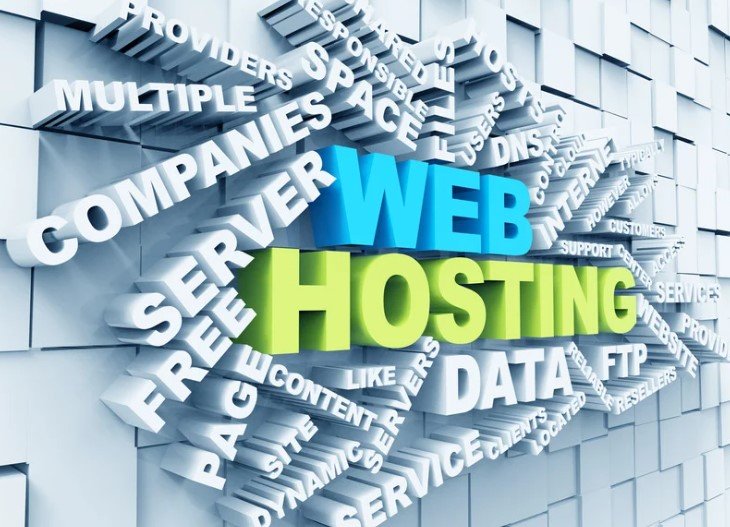WooCommerce has established itself as one of the most popular eCommerce platforms in the world, powering millions of online stores. Built on WordPress, it offers flexibility, scalability, and a wide range of plugins that allow business owners to customize their stores with ease. Whether you are selling handmade crafts, digital downloads, or a full product catalog, WooCommerce gives you all the tools needed to succeed.
However, many new entrepreneurs underestimate one crucial factor—web hosting. The performance of your WooCommerce store is heavily dependent on the quality of the hosting provider you choose. Hosting is more than just renting server space; it directly influences your store’s speed, uptime, security, and overall user experience. In fact, a poorly hosted store can lead to slow loading times, frequent downtime, and even vulnerabilities that put customer data at risk.
For eCommerce, every second counts. Studies show that customers abandon carts if a page takes more than three seconds to load. Similarly, if your site goes down during peak shopping hours, you may lose hundreds of potential sales. On top of that, search engines like Google consider site speed and security as ranking factors, meaning your hosting plan can also affect your SEO performance.
But here’s the good news—getting high-quality hosting doesn’t always mean breaking the bank. Many hosting providers offer budget-friendly plans that are specifically optimized for WooCommerce. The challenge is identifying which ones give you the best value without sacrificing performance.
This article will guide you through the essentials of choosing hosting for WooCommerce stores under budget. From understanding the unique needs of WooCommerce websites to exploring affordable hosting providers and cost-saving strategies, you’ll discover how to build a reliable online store without overspending.
Understanding the Needs of WooCommerce Stores
Running a WooCommerce store is not the same as running a simple WordPress blog or portfolio website. While a blog mostly serves static content such as text and images, a WooCommerce-powered store has far more moving parts. Product catalogs, shopping carts, customer logins, payment gateways, and order management systems all run in real time. This additional complexity means your hosting plan must be able to handle heavier workloads and higher security demands.
Why WooCommerce Requires More Resources
Every time a customer browses a product, adds it to the cart, or completes a checkout, your server processes multiple database queries. As your catalog and traffic grow, the server load increases significantly. Unlike a content-only site, which can perform decently on almost any hosting plan, WooCommerce demands optimized performance and enough server resources to handle multiple transactions without crashing.
The Core Needs of a WooCommerce Store
To run smoothly, every WooCommerce store requires a few fundamental hosting features:
Speed and Performance: Fast-loading pages are critical for reducing cart abandonment rates and improving user experience. Hosting with SSD storage, caching tools, and possibly Content Delivery Network (CDN) integration ensures your store remains responsive.
High Uptime Reliability: Even a few minutes of downtime can cost you lost sales. Look for hosting providers with at least a 99.9% uptime guarantee.
Security: Since WooCommerce handles sensitive customer data such as payment information, strong security is non-negotiable. A hosting plan should include SSL certificates, firewalls, malware scanning, and regular backups.
Scalability: As your business grows, your hosting should grow with you. A plan that allows seamless upgrades from shared hosting to VPS or cloud hosting prevents migration headaches later.
WooCommerce Compatibility: Some providers offer one-click WooCommerce installations, pre-configured servers, and specialized support staff trained in WooCommerce troubleshooting. These save time and effort, especially for beginners.
The Cost vs. Performance Balance
It’s tempting to choose the cheapest hosting plan available, but in WooCommerce, cost-cutting in the wrong places can hurt your business. For example, an ultra-low-cost shared hosting plan may save a few dollars each month, but it could slow down your store during peak hours, driving customers away. On the other hand, overspending on enterprise-level hosting when you are just starting out is also unnecessary.
The goal is to strike a balance—find hosting that provides essential WooCommerce features at a price that fits your budget. When you understand these core needs, it becomes much easier to evaluate different providers and choose a plan that won’t let you down when your business begins to grow.
Types of Hosting Options and Their Suitability for WooCommerce
Before selecting a hosting provider, it’s important to understand the different types of hosting available and how they perform with WooCommerce. Not all hosting is created equal, and choosing the wrong type can result in wasted money or poor performance. Below, we’ll break down the most common hosting types and discuss their suitability for WooCommerce stores under budget.
Shared Hosting
Shared hosting is the most affordable option, where multiple websites share the same server resources. For a brand-new WooCommerce store with very few products and limited traffic, shared hosting can be a good starting point. The low cost allows entrepreneurs to test their store without heavy financial commitments.
Pros:
- Very cheap, often under $5/month for entry-level plans.
- Beginner-friendly with one-click WooCommerce installation.
- Suitable for small stores or testing phases.
Cons:
- Limited resources since they are shared with other websites.
- Slower performance under traffic spikes.
- Security risks if other websites on the same server are compromised.
Best for: Beginners with low traffic expectations.
Managed WordPress Hosting
Managed WordPress hosting is specifically optimized for WordPress and WooCommerce. It typically comes with automated updates, caching, built-in security, and professional customer support. While slightly more expensive than shared hosting, it delivers far better performance and ease of use.
Pros:
- WooCommerce-optimized servers with excellent speed.
- Automatic updates, backups, and strong security.
- Expert support staff familiar with WordPress and WooCommerce.
Cons:
- More expensive than shared hosting (typically $10–$30/month).
- Limited flexibility if you want full server control.
Best for: Store owners who want performance and convenience without technical headaches.
VPS Hosting (Virtual Private Server)
A VPS splits a physical server into multiple virtual environments, giving you dedicated resources at a fraction of the cost of a dedicated server. VPS hosting is a big step up from shared hosting, offering more stability and speed for growing WooCommerce stores.
Pros:
- Dedicated resources (RAM, CPU) for better performance.
- More customization and control than shared or managed hosting.
- Handles moderate to high traffic smoothly.
Cons:
- Requires some technical knowledge (unless fully managed).
- Costs more than shared hosting, usually $20–$60/month.
Best for: Growing WooCommerce stores with consistent traffic and sales.
Cloud Hosting
Cloud hosting distributes your website across multiple servers, which ensures better performance and reliability. It’s highly scalable, meaning you only pay for what you use. Cloud hosting is particularly useful for WooCommerce stores that experience seasonal traffic spikes, such as during holidays or promotions.
Pros:
- Highly scalable—easily upgrade or downgrade resources.
- Excellent uptime and reliability.
- Pay-as-you-go pricing can be cost-effective.
Cons:
- More complex setup compared to shared hosting.
- Costs may increase if traffic grows unexpectedly.
Best for: Stores with fluctuating traffic or businesses preparing for long-term growth.
Which Hosting Type Should You Choose?
If you’re just starting and want to keep expenses as low as possible, shared hosting or budget managed WordPress hosting is a good entry point. As your WooCommerce store grows, upgrading to VPS or cloud hosting ensures stability and speed without overspending on enterprise solutions.
Ultimately, the right choice depends on your current stage. Starting small and upgrading as your store expands is usually the most cost-effective strategy.
Best Budget Hosting Providers for WooCommerce Stores
Once you understand the hosting types available, the next step is to evaluate the providers that deliver the right mix of affordability, performance, and WooCommerce compatibility. Not all companies that advertise “cheap hosting” are actually suitable for eCommerce. Below are some of the best budget hosting providers that consistently perform well for WooCommerce stores.
1. Hostinger
Hostinger is one of the most affordable yet surprisingly powerful hosting providers. Its WooCommerce-ready plans come with SSD storage, free SSL certificates, and 24/7 support. Even at entry-level prices, Hostinger offers features like LiteSpeed servers and caching tools, which help WooCommerce stores run smoothly.
- Starting price: Around $2.99/month with long-term plans.
- Strengths: Extremely low cost, strong performance for small to medium stores, easy setup.
- Best for: Beginners who want reliable hosting at the lowest possible price.
2. Bluehost
Bluehost is officially recommended by WordPress and has dedicated WooCommerce hosting packages. These plans come pre-installed with WooCommerce and the Storefront theme, making it very beginner-friendly. Bluehost also includes a free domain, SSL certificate, and marketing credits.
- Starting price: About $4.95/month with a discount for new customers.
- Strengths: Official WordPress endorsement, simple WooCommerce setup, reliable customer support.
- Best for: Small business owners who want trusted support and easy growth options.
3. SiteGround
SiteGround is known for its excellent performance, customer service, and advanced security. Its managed WordPress hosting is optimized for WooCommerce, including free CDN, daily backups, and automatic updates. While slightly more expensive than Hostinger or Bluehost, its reliability and scalability make it worth considering.
- Starting price: Around $6.99/month.
- Strengths: Excellent uptime, strong security, top-rated customer service.
- Best for: Store owners expecting steady growth and willing to pay a bit more for premium stability.
4. A2 Hosting
A2 Hosting focuses heavily on speed. Its Turbo servers can deliver up to 20x faster performance compared to standard hosting. For WooCommerce stores, faster load times translate directly into fewer abandoned carts and higher conversions. Despite the performance benefits, A2 Hosting remains reasonably priced.
- Starting price: Roughly $2.99/month (shared hosting), WooCommerce-friendly plans slightly higher.
- Strengths: Speed-focused infrastructure, reliable uptime, developer-friendly environment.
- Best for: Store owners who prioritize performance without moving to premium-tier hosting.
5. DreamHost
DreamHost offers WooCommerce-optimized hosting with SSD storage, daily backups, and strong uptime guarantees. Its pricing is transparent, and unlike many competitors, it doesn’t raise renewal prices dramatically. The inclusion of free SSL and domain privacy makes it especially appealing for budget-minded users.
- Starting price: About $2.59/month for shared hosting.
- Strengths: Transparent pricing, daily backups, reliable uptime.
- Best for: Budget-conscious entrepreneurs who value straightforward pricing without hidden costs.
How to Choose Among Them
- If your budget is extremely tight: Hostinger is the best entry point.
- If you want official WordPress support and simple onboarding: Bluehost is a safe choice.
- If you need long-term reliability: SiteGround provides premium features at mid-range costs.
- If speed is your top priority: A2 Hosting delivers excellent performance.
- If you want transparent pricing and daily backups: DreamHost is highly competitive.
Choosing a provider depends not only on price but also on your store’s growth plans. Always compare introductory offers against renewal prices and check what’s included in the package before committing.
Tips to Save Money Without Sacrificing Performance
Finding budget hosting for WooCommerce is only half the battle. The way you manage your hosting plan and store setup can make a big difference in long-term costs. Many new store owners overspend by choosing unnecessary add-ons or upgrading too quickly, while others go too cheap and sacrifice essential features. The key is to strike the right balance—keeping expenses low without hurting performance.
1. Take Advantage of Introductory Discounts
Most hosting providers offer steep discounts for the first term, sometimes up to 70% off. While these deals may require a commitment of one to three years, they can save you hundreds of dollars compared to paying month-to-month. If you are confident about running your WooCommerce store long term, locking in a discounted rate is one of the smartest money-saving strategies.
2. Choose the Right Plan Size
It can be tempting to pay extra for higher-tier hosting plans “just in case,” but this often leads to unnecessary costs. If your WooCommerce store is new, you likely don’t need unlimited bandwidth or advanced server resources yet. Start with the most affordable plan that meets your needs, then upgrade only when traffic and sales increase.
3. Optimize Store Performance to Reduce Server Load
A well-optimized WooCommerce store runs faster and requires fewer resources, allowing you to stay on budget hosting longer. Simple adjustments can go a long way:
- Use lightweight WooCommerce-compatible themes.
- Compress product images before uploading.
- Install a caching plugin to reduce server strain.
- Enable a free CDN (many hosts include this).
These optimizations not only cut costs but also improve user experience and SEO rankings.
4. Avoid Paying for Unnecessary Add-Ons
Hosting companies often offer extras like premium backups, security upgrades, or marketing tools at checkout. While some are useful, many WooCommerce hosting plans already include free SSL, automatic backups, and malware scanning. Evaluate whether you truly need the add-on or if a free alternative exists before adding it to your plan.
5. Use Free Plugins and Tools Strategically
WooCommerce’s open-source nature means there are thousands of free plugins available. For SEO, email marketing, and performance monitoring, you don’t need to invest in premium tools right away. Free plugins like Yoast SEO (basic version), WP Super Cache, or MailPoet can provide what you need without additional costs. As your store grows, you can gradually invest in premium versions.
6. Keep an Eye on Renewal Rates
One of the most common mistakes budget-conscious store owners make is ignoring renewal prices. Hosting providers advertise very low introductory rates, but the price often doubles or triples when the term ends. Always check the renewal cost in advance and set reminders to re-evaluate your plan before renewal. Sometimes switching providers after the first term can save you money.
7. Scale Smartly as Your Store Grows
When your WooCommerce store begins attracting more traffic and generating sales, upgrading your hosting plan will eventually become necessary. The trick is to scale at the right time—not too early, and not too late. If your site performance slows down under traffic, consider upgrading to VPS or cloud hosting, but avoid jumping to costly enterprise-level solutions unless you truly need them.
Conclusion – Finding the Perfect Balance
Choosing hosting for a WooCommerce store under budget doesn’t mean settling for poor performance or unreliable service. The reality is that many hosting providers today offer affordable plans specifically optimized for WooCommerce, giving small businesses the chance to compete without breaking the bank.
The key is to understand what your store really needs. Speed, security, and uptime are non-negotiable, even on a budget. If your store loads slowly, suffers frequent downtime, or lacks proper protection, you risk losing both customers and search engine rankings. Instead of chasing the absolute cheapest option, focus on finding hosting that delivers the essentials at a fair price.
For beginners, shared or managed WordPress hosting provides a cost-effective starting point. Providers like Hostinger and Bluehost make it easy to launch a WooCommerce store quickly with little technical effort. As your store grows, moving to VPS or cloud hosting with providers such as SiteGround, A2 Hosting, or DreamHost ensures smoother scaling and better long-term stability.
Equally important is how you manage your hosting costs. Taking advantage of introductory discounts, avoiding unnecessary add-ons, and optimizing your store’s performance can save you a significant amount of money each year. By planning upgrades strategically, you ensure that every dollar you invest in hosting contributes directly to your store’s growth.
At the end of the day, hosting is an investment in your business. The right hosting plan empowers your WooCommerce store to load quickly, stay secure, and provide a seamless shopping experience for your customers. And when customers enjoy shopping on your site, they come back, make repeat purchases, and spread the word.
If you are serious about building a profitable online store, start with a budget-friendly hosting provider that meets your immediate needs, but keep an eye on scalability. That way, you’re not only saving money today but also preparing your WooCommerce store for future success.



